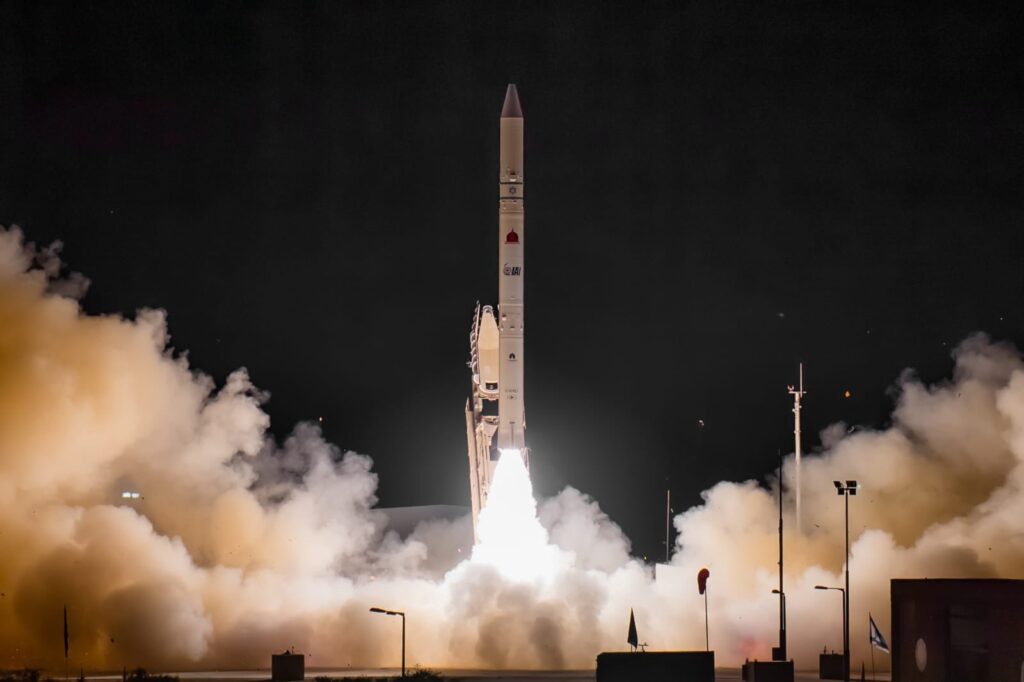Despite its size, Israel has a long history of launching satellites into orbit using its own domestically-developed Shavit rocket.

While Israel may not be considered a major space power, it has a notable history in satellite launches. Since 1988, the country has been successfully orbiting satellites using the Shavit (Comet) launch vehicle. Based on the Israeli Jericho-2 missile design, the Shavit has been produced in three different variants over the years. These rockets launch Ofeq (Horizon) series satellites with the latest launch being Ofeq-13 (TECSAR-3) in March 2023.
Israel launched its first operational Shavit booster in 1988, placing the technology demonstration satellite Ofeq-1 into orbit. A second launch placed another demonstrator spacecraft, the Ofeq-2, into orbit in 1990. In 1995, Israel launched the fully operational Ofeq-3 reconnaissance satellite on a Shavit booster and became one of the few nations with a spysat capability.
These early satellites were relatively small for the time and could easily be launched by Shavit. At one point, Shavit production was threatened because Israel planned to design larger Ofeq satellites that would be too heavy to launch aboard Shavit rockets.
Israel explored a number of options to move forward. One possibility was exporting the Shavit to a foreign launch site, such as Alcantara in Brazil or Kourou in French Guiana. However, this approach ran up against export restrictions, as the Shavit shares components with Israel’s Jericho ballistic missile. Another option was to purchase capacity on board a foreign rocket like the Indian PSLV (Ofeq-8 did indeed launch on PSLV), but this would be problematic since Israel wants to maintain its own launch capability. Israel has also investigated modifying a Boeing 747 to conduct Shavit air launches, but this idea proved difficult and expensive. The fourth option Israel explored was continuing to build satellites that could be launched on board the Shavit.
These Ofeq satellites and even the Shavit vehicle itself are secret and not much is known about their capabilities. Military satellites tend to be highly confidential but it does appear that Shavit is here to stay for use solely for Israel. The launch vehicle will have no sales on the international market. For political reasons, the rocket must launch toward the west from the Israeli Air Force Test Range in Palmachim, Israel, meaning it cannot take advantage of the Earth’s rotation to speed up the launch vehicle. This limits the types of orbits available to satellites launching from the base as well as the size and weight of the satellites.
Israel’s space capabilities are lightyears ahead of any country in the Middle East region. Most importantly, Israel is the first orbital-launch-capable nation in the region. The second and only nation to develop orbital launch capabilities is Iran, when it launched the communications satellite Omid on a Safir rocket in February 2009. Other countries such as Saudi Arabia, the United Arab Emirates, Qatar, and Oman all have space agencies or programs but must use either commercial or foreign government launch vehicles to place their satellites into orbit.
A regional space race is certainly underway as countries use both government resources and the private sector to invest in space-related research and technology. Israel’s advanced capabilities initially spurred the rest of the region’s ambitions, but competition between the Gulf states has created a healthy market where international collaboration and investment can drive innovation. Regarding security, tensions between Iran, its proxies, and Israel will certainly force the need for regional states to use space, not only for commercial purposes but for military as well. Satellites, have been and will continue to be launched into orbit for Middle East governments to serve as force multipliers in their military operations.





